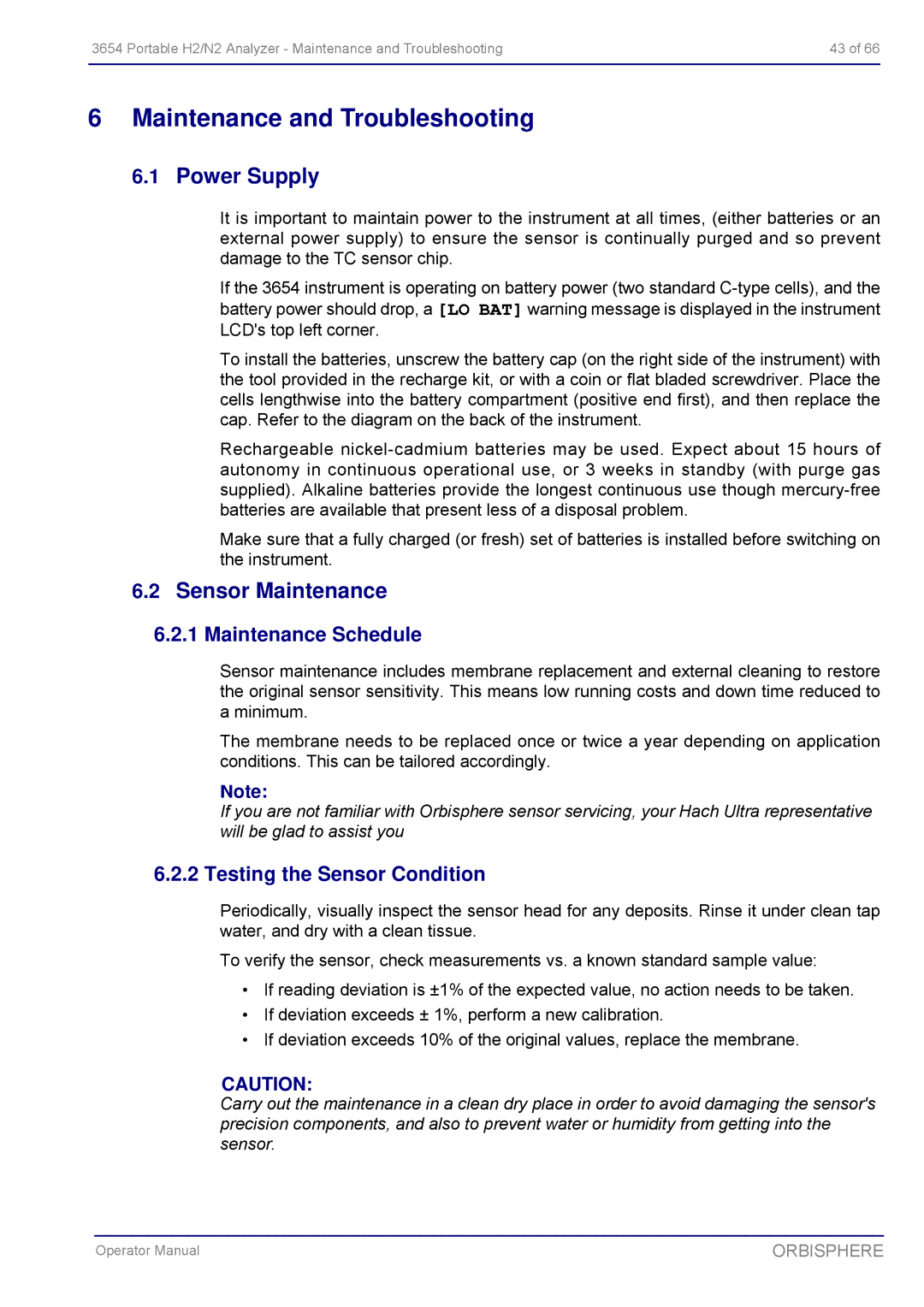3654 Portable H2/N2 Analyzer - Maintenance and Troubleshooting | 43 of 66 |
|
|
6 Maintenance and Troubleshooting
6.1Power Supply
It is important to maintain power to the instrument at all times, (either batteries or an external power supply) to ensure the sensor is continually purged and so prevent damage to the TC sensor chip.
If the 3654 instrument is operating on battery power (two standard
To install the batteries, unscrew the battery cap (on the right side of the instrument) with the tool provided in the recharge kit, or with a coin or flat bladed screwdriver. Place the cells lengthwise into the battery compartment (positive end first), and then replace the cap. Refer to the diagram on the back of the instrument.
Rechargeable
Make sure that a fully charged (or fresh) set of batteries is installed before switching on the instrument.
6.2Sensor Maintenance
6.2.1Maintenance Schedule
Sensor maintenance includes membrane replacement and external cleaning to restore the original sensor sensitivity. This means low running costs and down time reduced to a minimum.
The membrane needs to be replaced once or twice a year depending on application conditions. This can be tailored accordingly.
Note:
If you are not familiar with Orbisphere sensor servicing, your Hach Ultra representative will be glad to assist you
6.2.2 Testing the Sensor Condition
Periodically, visually inspect the sensor head for any deposits. Rinse it under clean tap water, and dry with a clean tissue.
To verify the sensor, check measurements vs. a known standard sample value:
•If reading deviation is ±1% of the expected value, no action needs to be taken.
•If deviation exceeds ± 1%, perform a new calibration.
•If deviation exceeds 10% of the original values, replace the membrane.
CAUTION:
Carry out the maintenance in a clean dry place in order to avoid damaging the sensor's precision components, and also to prevent water or humidity from getting into the sensor.
Operator Manual | ORBISPHERE |
